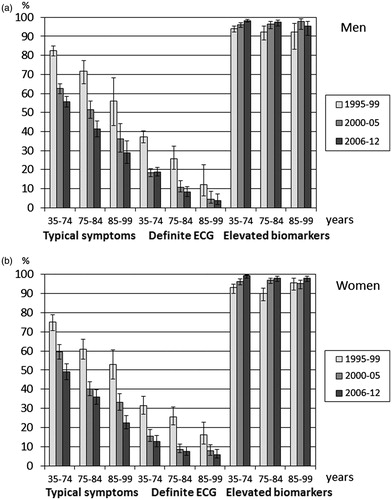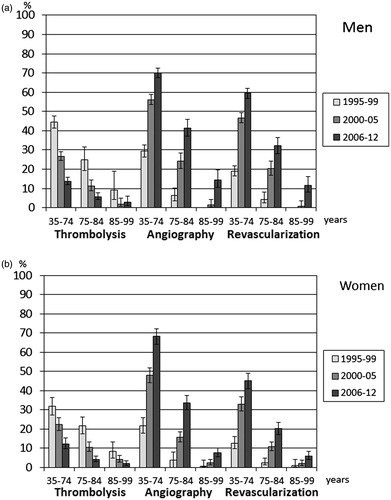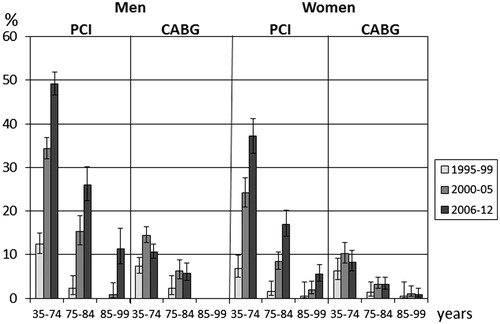Figures & data
Table 1. Age-standardized rates and trends (average annual change) in coronary mortality, incidence, and event rate of myocardial infarction (MI) per 100000 inhabitants in the population aged 35–74, 75–84, or 85–99 years of the FINAMI areas during 1995–2012.
Table 2. Age-standardized 28-day case fatality of definite or probable myocardial infarction (MI), prehospital case fatality, and 28-day case fatality for hospitalized cases among persons aged 35–74, 75–84, or 85–99 years, and trends in case fatalities in the FINAMI areas during 1995–2012.
Figure 1. Clinical characteristics of definite first myocardial infarction among men (a) and women (b) aged 35–74, 75–84, and 85–99 years who survived >1 day after hospital admission during 1995–1999, 2000–2005, and 2006–2012 (ECG: electrocardiography changes).

Figure 2. Treatment strategies (proportions of patients undergoing treatments) of definite first myocardial infarction among men (a) and women (b) aged 35–74, 75–84, and 85–99 years who survived >1 day after hospital admission during 1995–1999, 2000–2005, and 2006–2012.

Figure 3. Revascularization procedures (proportions of patients undergoing treatments) in connection with definite first myocardial infarction among men and women aged 35–74, 75–84, and 85–99 years who survived >1 day after hospital admission during 1995–1999, 2000–2005, and 2006–2012 (PCI, percutaneous coronary intervention. CABG, coronary artery bypass grafting).

Table 3. Timing of coronary angiography, percutaneous coronary intervention (PCI) and coronary artery bypass grafting (CABG) among patients with definite first myocardial infarction (n = 6446) in the FINAMI areas during 2003–2012.
Table 4. Probability of coronary angiography and revascularization procedure (percutaneous coronary intervention, PCI, and coronary artery bypass grafting, CABG) among patients with definite first myocardial infarction (n = 4085) in the FINAMI areas during 2003–2012.
